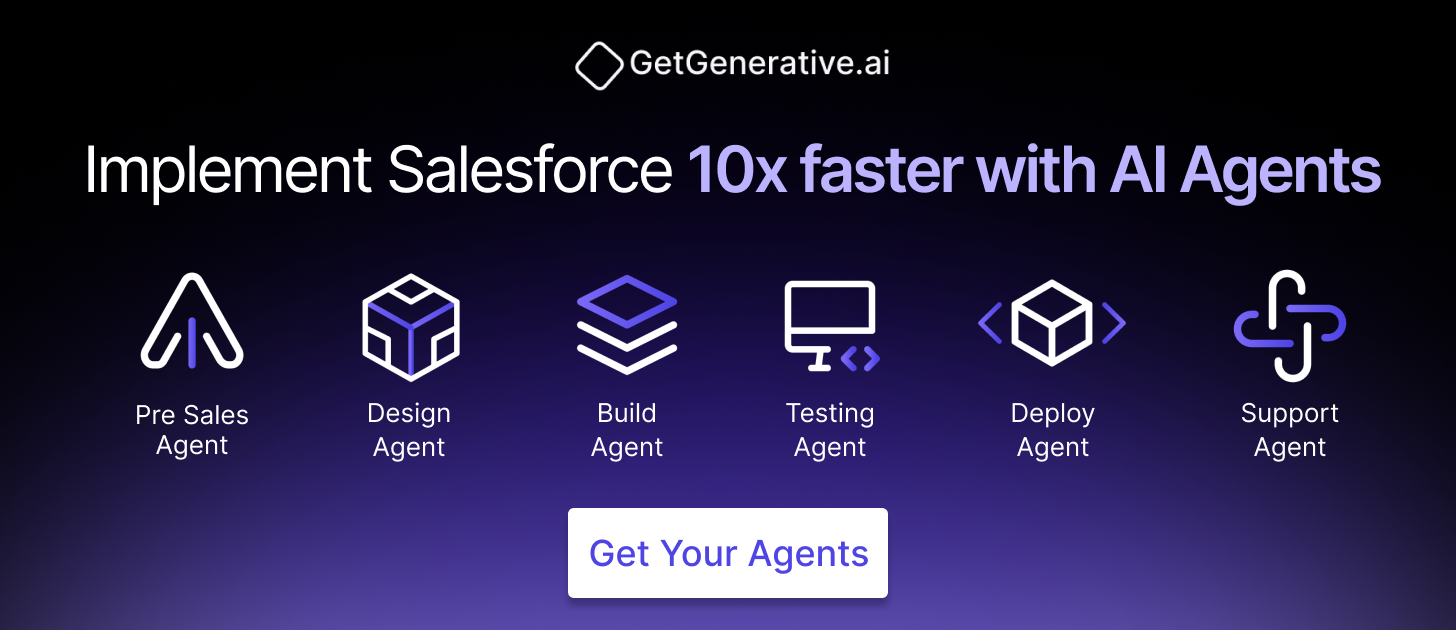Top Challenges in Salesforce Financial Cloud Implementation
Salesforce Financial Services Cloud (FSC) is reshaping how banks, insurance companies, and wealth management firms engage with their clients. It offers a unified platform that enhances customer experiences, improves productivity, and supports compliance with complex regulatory frameworks.
However, implementing FSC is no simple lift-and-shift—it’s a transformative endeavor fraught with technical, operational, and cultural hurdles.
This guide explores the top challenges institutions face while implementing FSC, backed by expert insights and real-world examples. It also outlines actionable strategies to overcome them and ensure long-term ROI. Let’s get started!
1. Complex Technical Integration with Legacy Systems
Challenge: Fragmented Core Banking Infrastructure
Many financial institutions still rely on legacy systems developed decades ago, often lacking modern APIs or scalable architectures. These systems were never built to integrate smoothly with cloud-based CRMs like Salesforce. As a result, integration becomes one of the most resource-intensive components of FSC adoption.
Institutions undergoing mergers and acquisitions face even more hurdles, often maintaining multiple, disconnected systems. Real-time data exchange, error recovery mechanisms, and performance bottlenecks frequently become blockers.
Solution: Middleware + Phased Integration
Use robust middleware tools (e.g., MuleSoft, Dell Boomi) to abstract and orchestrate data exchange.
Prioritize phased integration—starting with high-value systems and expanding gradually.
Build fallback mechanisms to handle sync failures and maintain service continuity.
2. Data Model Transformation & Migration Challenges
Challenge: Rebuilding the Data Architecture from Scratch
FSC introduces new data models like Person Accounts, Financial Accounts, and Relationship Groups that differ from standard Salesforce orgs. For organizations migrating from Sales Cloud or other CRMs, re-aligning to this schema is non-trivial.
Additionally, the volume and structure of data double when adopting Person Accounts (each customer requires both an Account and a Contact). This can drastically impact performance and storage planning.
Solution: Pre-Migration Data Strategy
Conduct detailed gap analysis on data availability and structure.
Cleanse and standardize data before loading it into Salesforce.
Use Salesforce Data Loader or external ETL tools following Salesforce’s upload sequence guidelines.
3. Data Quality and Governance Issues
Challenge: Poor Data in, Poor Outcomes Out
Many FSC implementations fail to deliver expected value due to pre-existing data quality problems. Issues like duplication, outdated information, or incomplete records reduce the effectiveness of features like analytics and automation.
In addition, financial institutions must meet stringent data governance and compliance standards, including GDPR, HIPAA, and FINRA regulations.
A study shows that over 65% of Salesforce migration projects face delays due to unstructured or corrupted legacy data.
Solution: Establish a Governance Framework
Assign data stewards to ensure ownership and accountability.
Implement validation rules, audit trails, and automated duplicate detection.
Regularly audit data accuracy with tools like Salesforce Optimizer.
4. Organizational Resistance and Change Management
Challenge: Cultural Pushback and Skepticism
Digital transformation often fails not because of poor technology, but due to people-related issues. Employees comfortable with existing systems may resist switching to FSC, fearing the loss of control or job relevance.
In highly regulated sectors like banking and insurance, where legacy systems have been in use for decades, this resistance can derail entire implementation timelines.
Solution: Human-Centric Change Management
Communicate the “why” behind the shift to FSC early and often.
Involve employees in system design workshops and feedback loops.
Appoint “FSC Champions” across departments to drive peer learning.
5. User Training & Adoption Barriers
Challenge: Diverse Tech Fluency Across Roles
Salesforce FSC isn’t just a tool for advisors—it’s used by client service teams, compliance officers, underwriters, and marketers. Each role has unique workflows and data needs. Without proper training, users struggle to adopt the platform fully.
Moreover, the FSC UI—although cleaner than legacy systems—still involves role-based configurations, dashboards, and componentized pages that can be confusing for new users.
Solution: Tiered, Contextual Training
Deliver role-specific training paths (e.g., for wealth advisors, back-office users, etc.).
Use Salesforce Trailhead, LMS systems, and internal sandbox environments.
Monitor user engagement metrics (logins, reports accessed, etc.) to identify struggling users.
6. Resource Constraints Across Teams
Challenge: Limited Internal Bandwidth and Expertise
Implementing Salesforce FSC requires cross-functional collaboration involving Salesforce architects, compliance officers, data analysts, and end-users. However, many small-to-mid-sized financial institutions face:
Shortage of certified Salesforce professionals
Time constraints on internal SMEs
Budget limitations for hiring consultants
Solution: Strategic Partner Collaboration
Engage a Salesforce consulting partner with FSC expertise early in the process.
Offload non-core technical tasks (like integration and testing) to external teams.
Invest in upskilling internal talent through certifications (e.g., Salesforce Admin or FSC Consultant).
Explore Salesforce-certified partners for Financial Services Cloud to find domain-specific support.
7. Customization vs. Configuration Trade-Off
Challenge: Over-Customization Increases Risk
It’s tempting to replicate existing legacy workflows inside Salesforce, but excessive customization introduces technical debt. This limits the ability to:
Receive future Salesforce FSC updates
Maintain consistent performance
Integrate with newer ecosystem tools
Solution: Favor Configuration First
Leverage Salesforce’s native FSC components, including Financial Accounts, Life Events, and Action Plans.
Use Flows, Lightning App Builder, and Dynamic Forms for user-friendly configurations.
Limit Apex code and Visualforce use unless functionality cannot be achieved via declarative tools.
8. User Interface and Experience (UX) Limitations
Challenge: Varying UX Expectations Across Teams
Frontline advisors, operations teams, and call center agents all interact with FSC differently. Some may prefer minimalist dashboards, while others need data-rich views. Creating a “one-size-fits-all” UI can frustrate users.
Additionally, users expect mobile-friendly and responsive interfaces for fieldwork or remote access—a challenge when legacy components aren’t optimized for mobile.
Solution: Persona-Based Design + Mobile Testing
Create custom Lightning Pages tailored to each role’s workflow.
Use Salesforce Mobile Publisher to deploy branded mobile apps.
Continuously collect user feedback to refine layouts and visibility rules.
9. Performance and Scalability Bottlenecks
Challenge: System Lags as Data Grows
As customer records, relationship mappings, and activity logs grow, so does system load. Poor performance not only affects productivity but also raises compliance risks if tasks are delayed or lost in the system.
Integrations can also become bottlenecks when syncing millions of transactions or documents between FSC and core banking platforms.
Solution: Proactive Monitoring and Scalability Planning
Use Salesforce Shield to monitor audit trails and platform events.
Optimize integration frequency and payload size using asynchronous APIs.
Archive legacy data using tools like Big Objects or third-party cold storage solutions.
10. Maintaining Long-Term ROI and Value Realization
Challenge: ROI Drops Without Continuous Improvement
Even after a successful go-live, FSC implementations can lose momentum. Without continuous optimization, institutions may not fully leverage advanced FSC features like Relationship Intelligence, Action Plans, or AI-powered lead scoring.
Solution: Governance + Feedback Loops
Schedule quarterly business reviews to assess usage, performance, and improvement areas.
Establish a CRM Center of Excellence (CoE) to coordinate FSC evolution across teams.
Set KPIs (e.g., NPS, case resolution time, cross-sell success) and track via Salesforce dashboards.
Also Read – Salesforce Financial Cloud Implementation Guide 2025
Final Thoughts
Salesforce Financial Services Cloud is not just a CRM—it’s an enterprise platform that touches nearly every aspect of customer operations in banking, insurance, and investment management.
Success depends on seeing it as a business transformation, not just a tech upgrade.
Looking for a smarter way to navigate these challenges?
Explore how we use AI-powered agents and deep domain expertise to simplify Salesforce Financial Services Cloud implementations – see how we do it.




